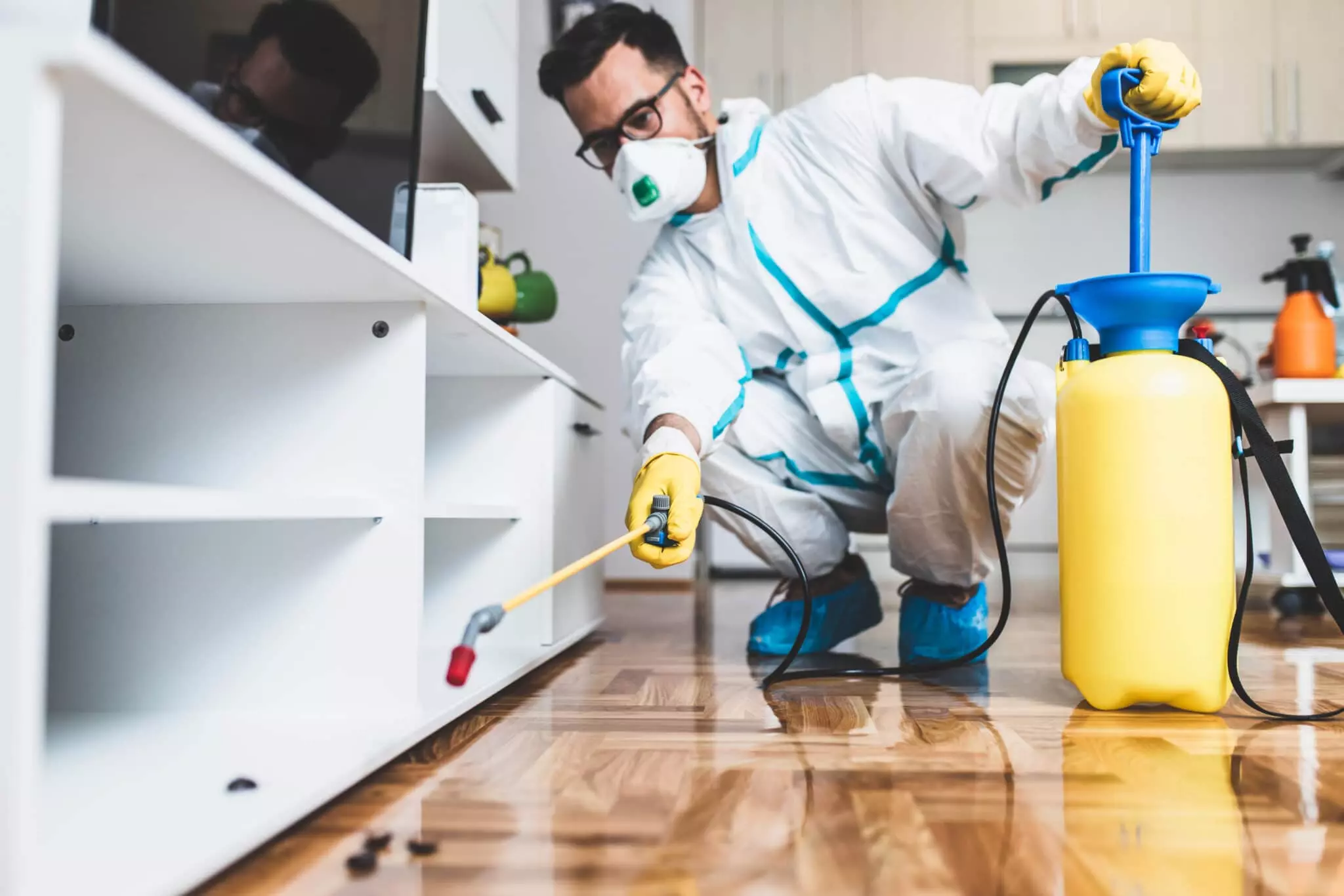A1 Charlotte Pest Control Companies - Your Regional Pest Experts
A1 Charlotte Pest Control Companies - Your Regional Pest Experts
Blog Article
Bed Bug Treatment Failure: Contrasting Chemical Vs. Non-Chemical Solutions
In the realm of bug control, particularly when managing the consistent concern of bed insects, the choice between chemical and non-chemical therapy remedies can be a critical one. Both approaches use distinct advantages and downsides, affecting variables such as effectiveness, safety and security factors to consider, and general expense. By examining the nuanced information of each method, a clearer understanding of which path to pursue in attending to a bed pest infestation can be obtained.
Effectiveness of Chemical Therapies
Chemical treatments for bed pest invasions have been commonly recognized for their rapid and powerful efficacy in eradicating these pests. When considering the effectiveness of chemical treatments, it is crucial to recognize that they can provide a quick and complete remedy to a bed bug trouble.
In addition, chemical therapies have the benefit of providing recurring impacts, indicating that they can continue to eliminate bed bugs also after the first application. This residual action is especially advantageous in combating any type of prospective re-infestations. In addition, the quick activity of chemical therapies can bring relief to people facing extreme bed insect invasions, allowing them to reclaim control of their living areas promptly.
Safety And Security Worries With Chemical Solutions
One crucial facet that requires cautious consideration when utilizing chemical services for bed insect therapy is guaranteeing the security of occupants and the setting. Direct exposure to certain chemicals used in bed bug treatments can lead to respiratory system issues, skin irritability, or various other unfavorable responses, particularly in individuals with pre-existing conditions or level of sensitivities.
Additionally, the ecological effect of chemical remedies is another significant consideration. Some chemicals made use of in bed insect therapies may be unsafe to helpful pests, wild animals, and ecosystems if they seep into the dirt or water supply. It is important to utilize chemical therapies sensibly, complying with security guidelines, and thinking about less poisonous choices to reduce these risks and make certain the effective and secure monitoring of bed insect invasions.
Benefits of Non-Chemical Methods
Thinking about the possible safety and security issues and environmental influence associated with chemical remedies for bed bug treatment, exploring non-chemical techniques presents an encouraging alternative with a number of distinctive advantages. Non-chemical methods use a more secure choice for homes, particularly those with individuals, family pets, or kids sensitive to extreme chemicals. These methods eliminate the threats of direct exposure to toxic substances, reducing the potential for unfavorable wellness effects. Additionally, non-chemical treatments are eco-friendly, as they do not add to air or water pollution, making them a lasting selection for pest control.
Additionally, non-chemical options can be efficient in targeting bed pests, including hard-to-reach areas where chemical treatments might not pass through. Approaches such as warm treatment, vacuuming, steam cleaning, and mattress encasements supply detailed eradication without the use of unsafe chemicals. Moreover, non-chemical approaches can be less turbulent, needing minimal prep work and permitting for quicker reentry into treated areas. Generally, going with non-chemical bed pest treatment approaches not just focuses on safety and environmental management however likewise makes sure thorough and efficient insect control.
Limitations of Non-Chemical Treatments

Furthermore, non-chemical therapies frequently need several applications to achieve effective removal. This can be taxing and may not always assure complete removal of all bed bugs and their eggs, particularly in hard-to-reach or concealed areas.
In addition, the success of non-chemical treatments greatly counts on click here now appropriate execution and thoroughness, which can be testing for individuals without expert competence. Insufficient application of non-chemical approaches may lead to insufficient removal, causing persistent invasions and the demand for additional treatments.
As a result, while non-chemical therapies have their benefits, it is important to recognize these constraints and consider them when identifying the most effective approach for taking care of bed insect invasions.
Expense Comparison: Chemical Vs. Non-Chemical Options
Given the constraints related to non-chemical treatments, an important facet to examine in the context of bed insect monitoring is the price contrast between chemical and non-chemical alternatives. Chemical treatments generally involve the application of pesticides by professionals, which can vary from $250 to $900 per room, relying on the seriousness of the infestation and the dimension of pest infestation the area to be dealt with. In comparison, non-chemical therapies like warmth treatment or heavy steam can be much more costly, with expenses ranging from $1,000 to $6,000 for an entire home. While the first expense of chemical therapies might seem lower, multiple treatments may be needed to totally remove the problem, possibly boosting the overall expense. On the various other hand, non-chemical options might give a more lasting and green solution, although they can be cost-prohibitive for some people. Inevitably, when considering the expense of bed pest therapy choices, it is crucial to weigh the upfront expenditures versus the efficiency and lasting sustainability of the selected method.
Final Thought

Taking into consideration the prospective safety concerns and ecological effect linked with chemical services for bed pest therapy, exploring non-chemical techniques provides a promising option with numerous unique benefits.Provided the restrictions associated with non-chemical treatments, a necessary aspect to examine in the context of bed insect administration is the price contrast in between More hints chemical and non-chemical options. In contrast, non-chemical treatments like warm therapy or vapor can be more expensive, with expenses varying from $1,000 to $6,000 for a whole home. While the first expense of chemical therapies may seem reduced, multiple treatments may be called for to completely get rid of the infestation, potentially raising the general expense.In conclusion, when contrasting chemical and non-chemical bed bug treatment alternatives, it is important to take into consideration performance, security, advantages, constraints, and price.
Report this page